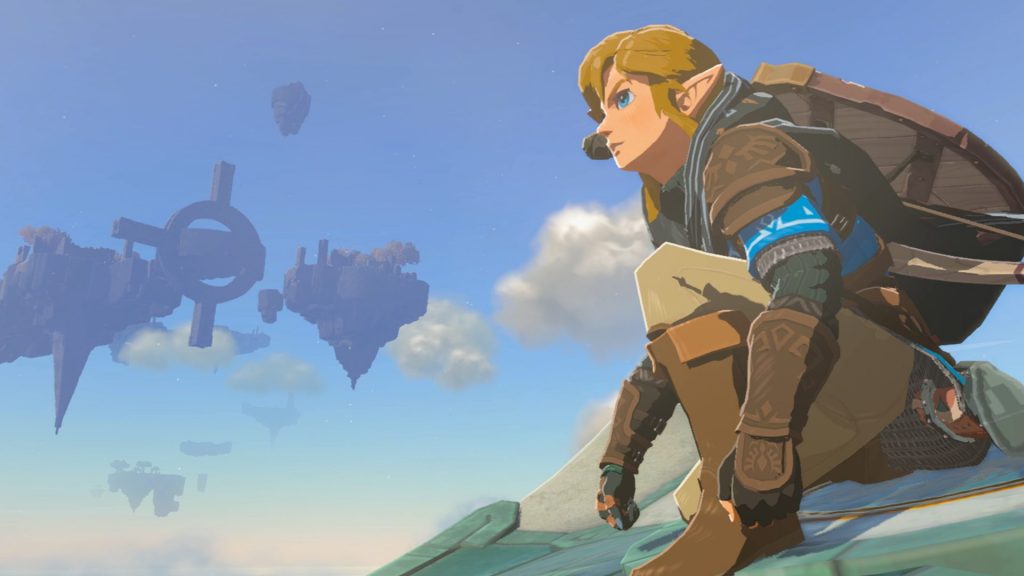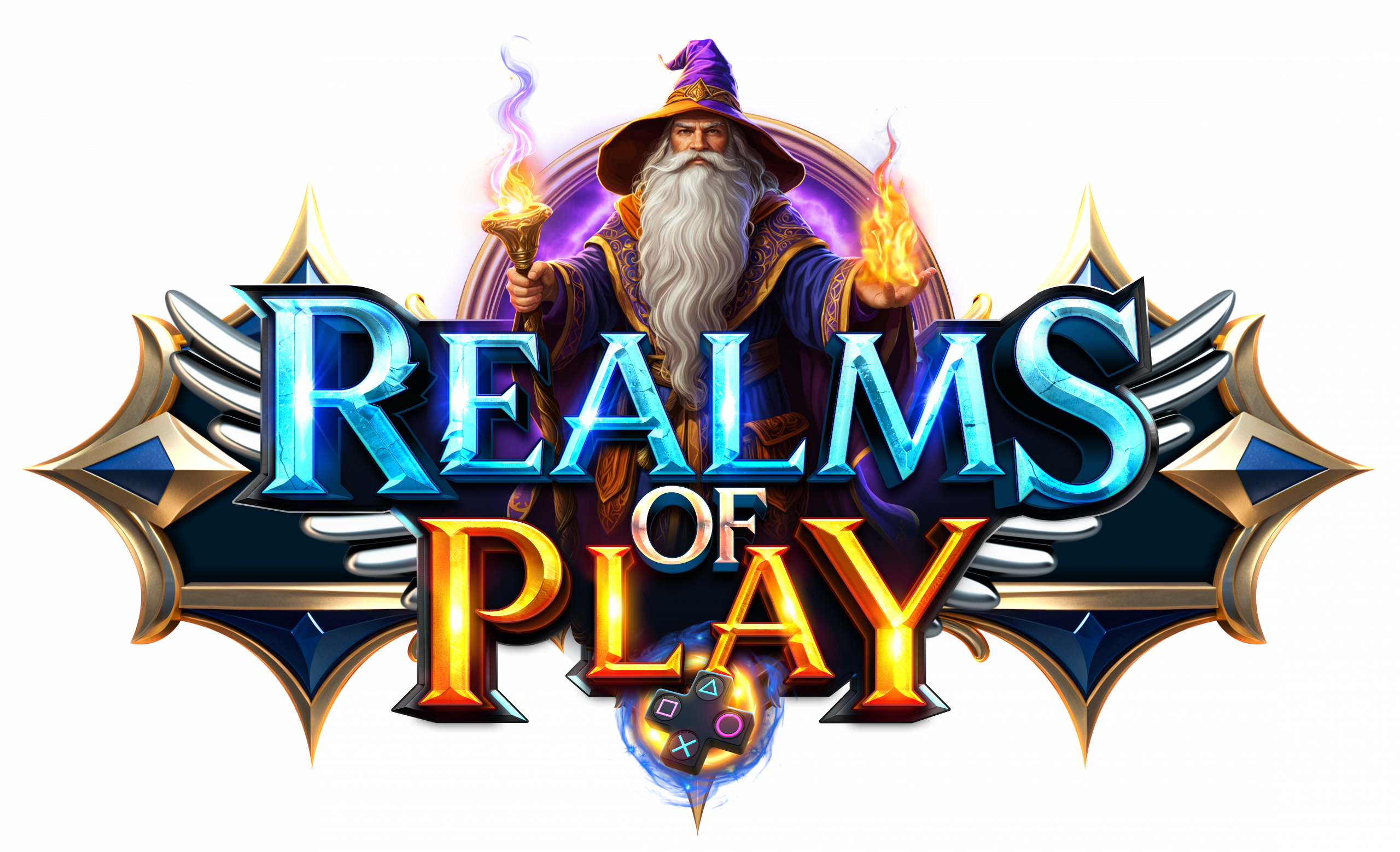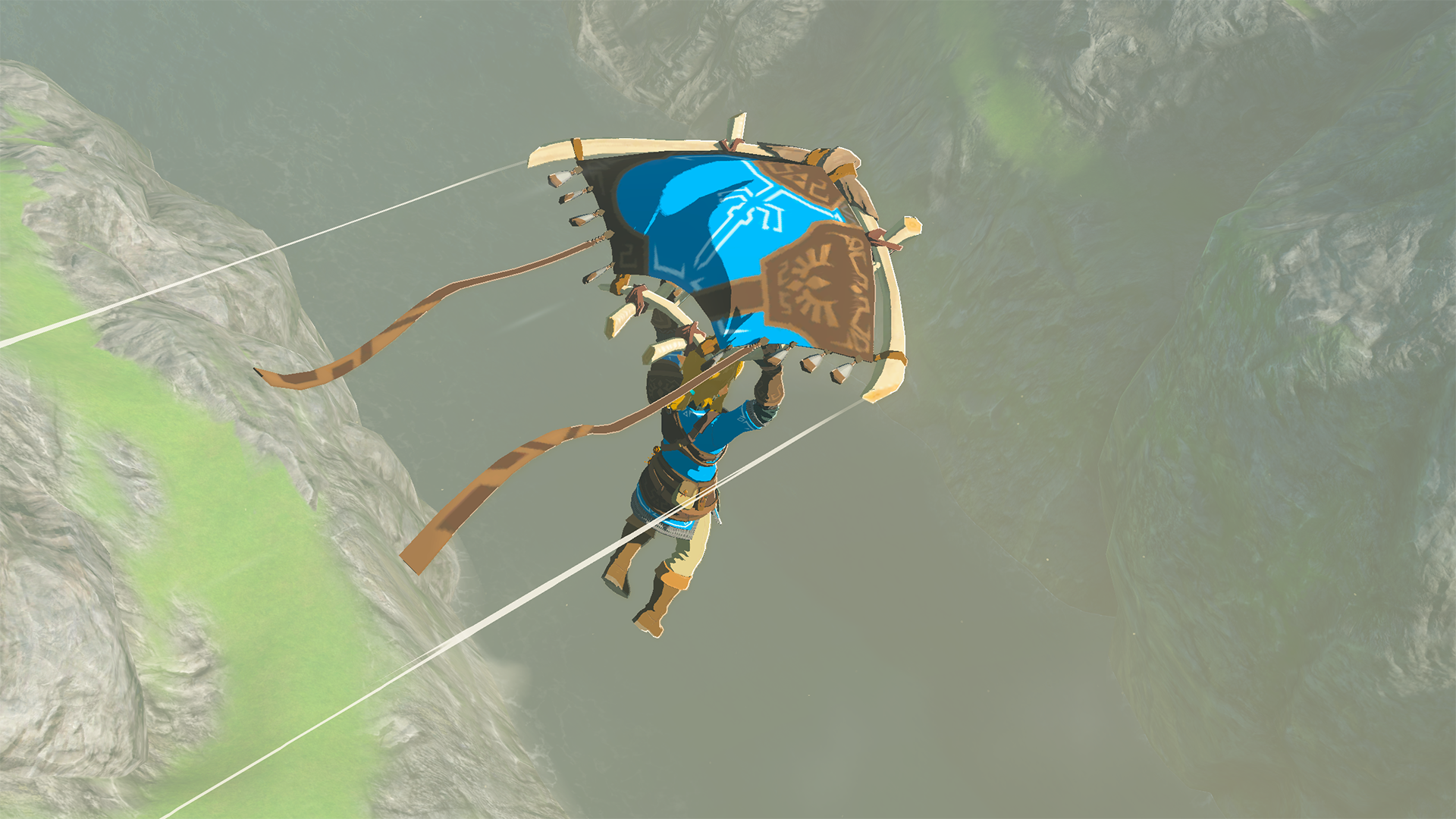The wind howls louder above the clouds. You let go.
Freefall becomes philosophy. In Tears of the Kingdom, exploration isn’t just a design feature — it’s a dialogue between you and the world. It doesn’t tell you what to do; it shows you what’s possible, then dares you to imagine more.
Where Breath of the Wild gave us freedom, Tears of the Kingdom gives us purpose. Purpose in discovery, in reinvention, in verticality that isn’t just for scale — it’s for storytelling. Nintendo didn’t just build a bigger sandbox; they taught the sand to speak.

A World Rewritten
This is a Hyrule shaped by time, trauma, and transformation. Three planes — the surface, sky, and Depths — form a living, breathing world. The sky is hopeful. The surface is familiar, but fractured. The Depths? They are fear given form.
Every part of the world tells its own silent story, and you are never above or beneath it. You’re in it. Ancient ruins, corrupted flora, and remnants of a forgotten conflict speak in the language of ruins, lighting, and layout. Discovery feels earned, not scripted.
Systems That Trust the Player
This game trusts you more than most developers trust themselves.
The new Ultrahand and Fuse systems are a revolution in sandbox mechanics. It’s not about solving puzzles; it’s about inventing them. Build vehicles, weapons, traps — anything the systems allow. And they allow a lot. One moment you’re building a makeshift glider to escape a highland ambush, the next you’re weaponizing enemy parts into chaotic, absurd weapons.
It’s chaos, but it’s curated. Combat is still deliberate, stamina matters, and timing rules all. But now it’s wrapped in a toolset that invites — no, demands — creativity.
A Story Measured in Memory
The story beats deeper here. Zelda is no longer a figure of passive royalty; she’s history in motion. Ganondorf returns not just as a threat, but as a myth unraveled. The game’s narrative doesn’t lecture — it unfolds, often out of sequence, encouraging you to put the pieces together.
It’s quieter than you’d expect for something so epic. But its restraint is intentional. In moments of silence, you reflect. In battles, you act. It’s this rhythm of stillness and urgency that gives the narrative weight.

